Hot Lips Salvia Care Guide (Salvia microphylla)
Hot Lips Salvia (Salvia Microphylla) is a unique, evergreen bushy sage with bright white and red flowers. Learn how to care for them in this guide!
These one of a kind two toned flowers adorn thin stalks with diamond shaped green leaves.
Tubular in shape, the Hot Lips flower is a frequent destination for hummingbirds and pollinators. They feature bright white and red blooms and soft green aromatic foliage.
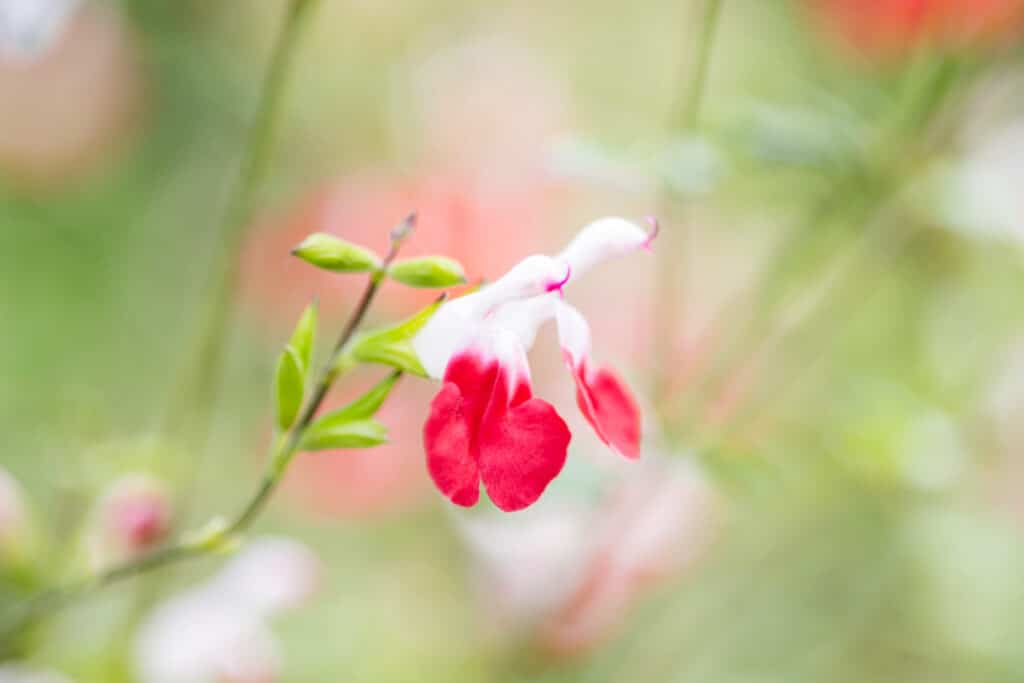
Get the best list of companion plants for salvia here!
How To Care For Hot Lips Salvia
Plant these busy sage plants in well-drained soil in a full sun area. Grow Hot Lips salvia alongside other heat loving plants such as lavender and cosmos. They do very well in a low-water garden.
Hot Lips saliva is a popular plant because they are low maintenance with unique blooms. Keep reading to learn more about how to care for these herbaceous evergreen plants.
Hot Lips salvia is a siren for hummingbirds… you’ll find your feathered friends absolutely LOVE to visit this bold plant for a drink of sweet nectar. A flowering perennial, hot lips will bring the hummingbirds back year after year with proper planting and care (bonus: it’s not a hard plant to please).
These plants are also deer resistant and attract bees and butterflies as well.
This article discusses everything you need to know about planting this salvia variety in your yard or cottage garden and encouraging it to thrive!
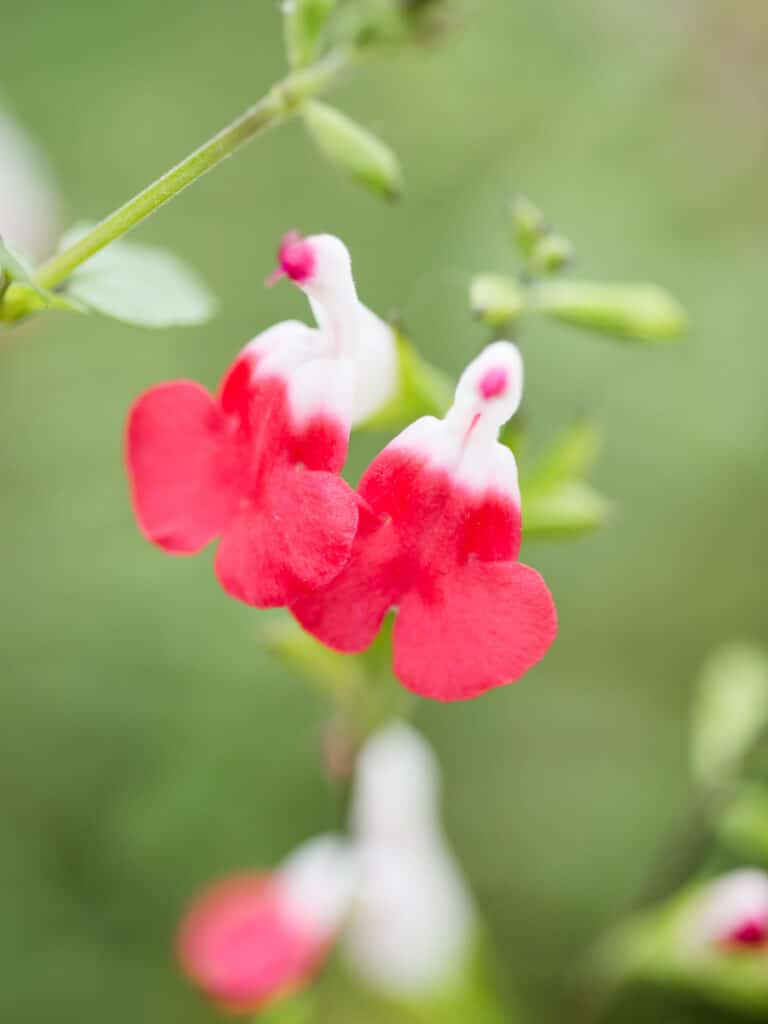
Why You’ll Love Hot Lips:
- Easy to grow with low water needs once established (good choice for rock gardens)
- Attracts pollinators: especially hummingbirds and bees
- Deer resistant! Perfect for forest and field areas that attract deer
- Has fragrant foliage (Lightly herbal, minty scent)
- Unique bicolor flowers add dimension and contrast to the garden
- Ideal choice for a hot, sunny spot in the garden
- Fast growing perennial that blooms all season (get more ideas for long bloomers here)
- Thrives in poor soil, relatively low maintenance plant
Tip for planting: Plant Hot Lips salvia in a sunny, warm spot where you can view the plant from your kitchen window. While washing dishes, you’ll enjoy seeing your hummingbird friends drinking nectar from Hot Lips sage throughout the day.

What Does Hot Lips Salvia Look Like?
Hot Lips salvia is a heat loving flower that blooms from late spring until late summer, and even into fall in many areas. Sometimes called “Baby sage”, they can grow in a temperate climate and can also handle a mild drought.
Hot Lips salvia are bushy plants with long thin stems that boast bright flowers. In cooler weather, Hot Lips salvia has two toned, striking red and white flowers. In hot weather, the entire flower will turn red.
The petals are small and medium green (not too vibrant yet not overly muted). The diamond shaped petals adorn a long stick like branch on the shrub.
The entire plant is a medium sized evergreen bushy shrub. In the right conditions they can outgrow their average size (which is approximately 3 feet high by 3 feet wide).
The flowers bloom twice in a season: you will see new growth a few weeks after the first rush of flowers fades.
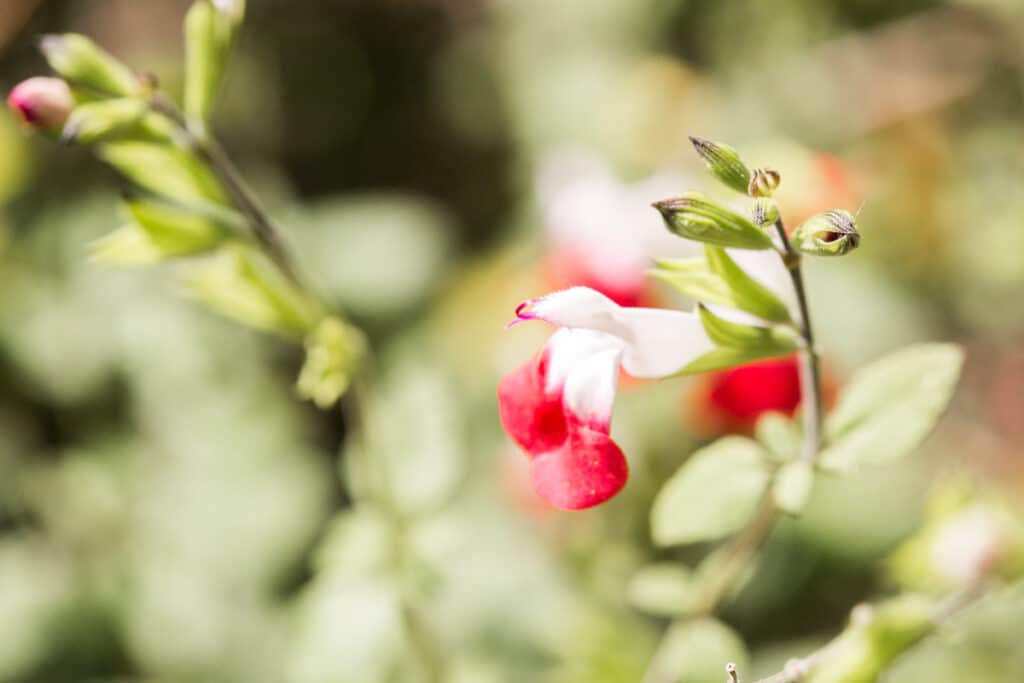
What Is Salvia?
Salvia is the largest genus in the sage family. This family of plants is made up of shrub like annuals, perennials, and woody shrubs. There are over 900 species in the salvia family, with Hot Lips being one of the brightest and best!
The meaning of Salvia Microphylla is small leaved, evergreen sage plant. It is naturally found in dry desert areas (such as southern California and Mexico). Ideal conditions for this sage plant are a dry climate with lots of sun, but they are adaptable to other areas.
Microphylla, in Latin, means “very small leaves”.
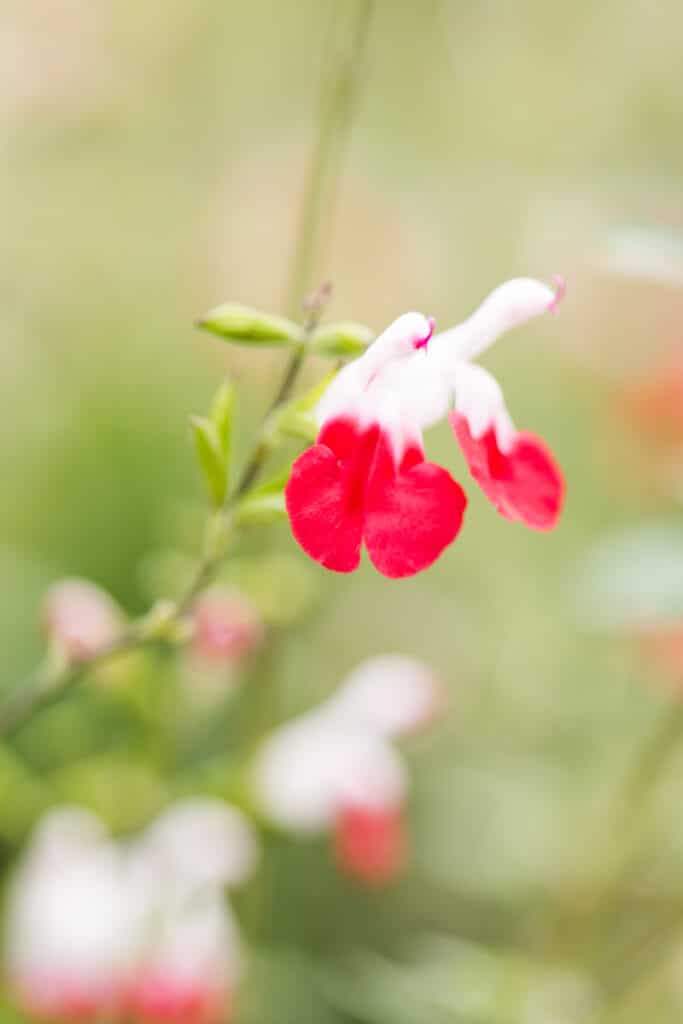
Commercially Available To Plant and Grow
Hot Lips salvia is a variety of sage that has been in commercial horticulture since the 1990’s. It is well loved for it’s unique flower, ability to attract pollinators and for its earthy aroma and spicy mint smelling leaves.
Medium in size, unique sun loving hot lips is a versatile and hardy plant to add to your beds. Expect this bold plant to stir up conversation with friends and family, and keep the birds and bees buzzing!
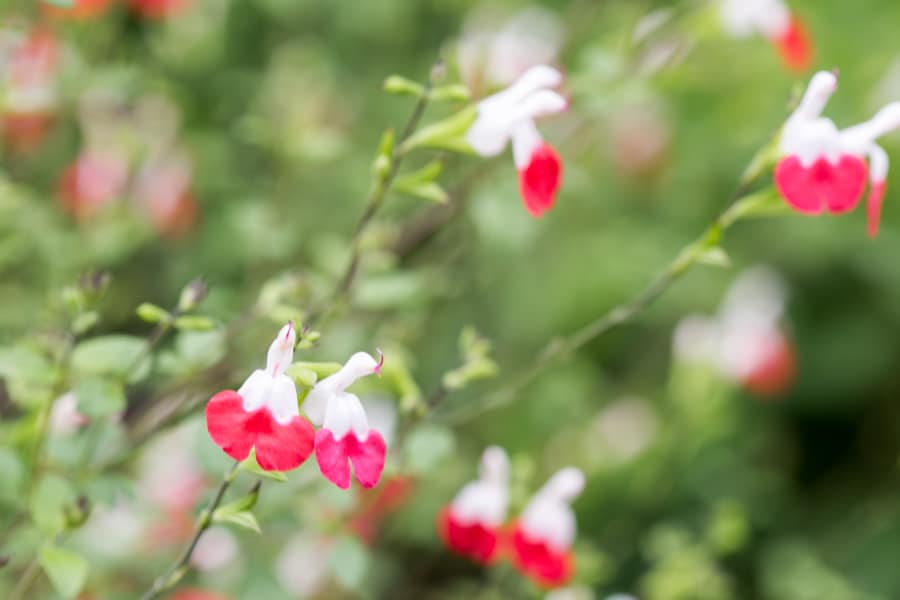
Planting Zones
Due to craving heat and an aversion to frosts, Hot Lips salvia can be grown as a perennial in zones 7-10.
In cooler climates you can enjoy hot lips as an annual, and/or take measures to protect your plant from harsh winters. Using a container, you can move your hot lips indoors overwinter before the first frost.
How Large Does Hot Lips Grow?
This sage can grow 2-3 feet tall and 2-3 feet wide, though it can easily be pruned to maintain a smaller shrub size.
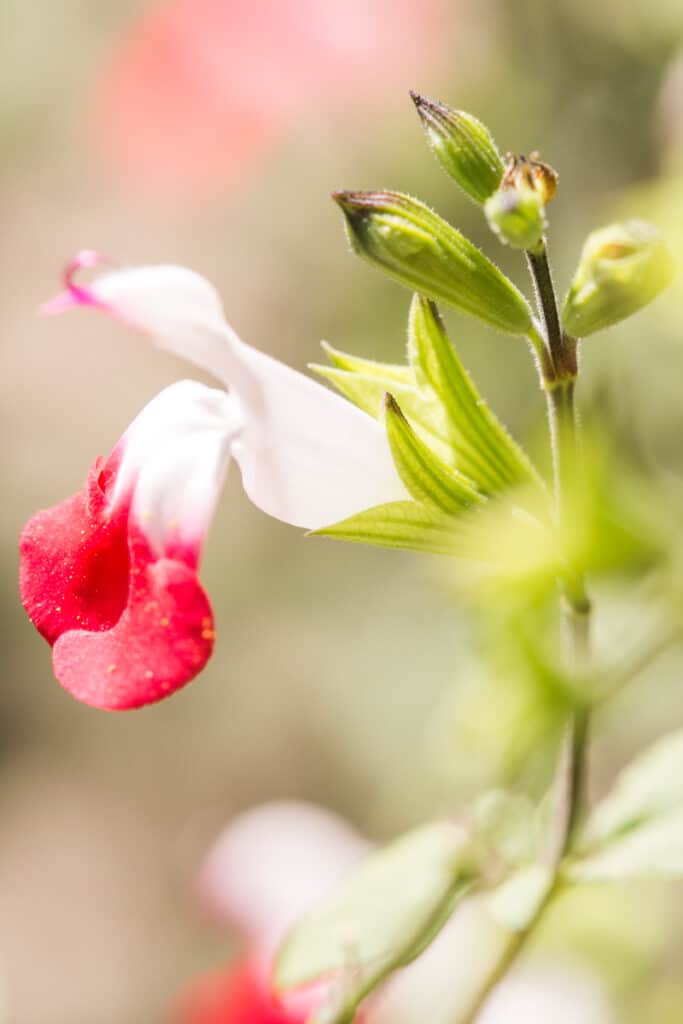
Hot Lips Salvia Plant Care
With tiny, delicate flowers, Hot Lips salvia may look like it needs a gentle touch in order to thrive. Rest assured though, that this salvia is hardier than it appears (it may even survive the battering of a little one with a stick… ask us how we know!).
There are a just a few key elements to keeping your Hot Lips happy: light, soil and a little light pruning. Keep in mind the history of this plant: it’s ancestors come from dry, desert like areas that get full sun.
Don’t let that stop you from planting this gorgeous flowering sage in a more moderate climate…we have tips on how to adjust accordingly below.
Continue reading for light, water, and soil needs.
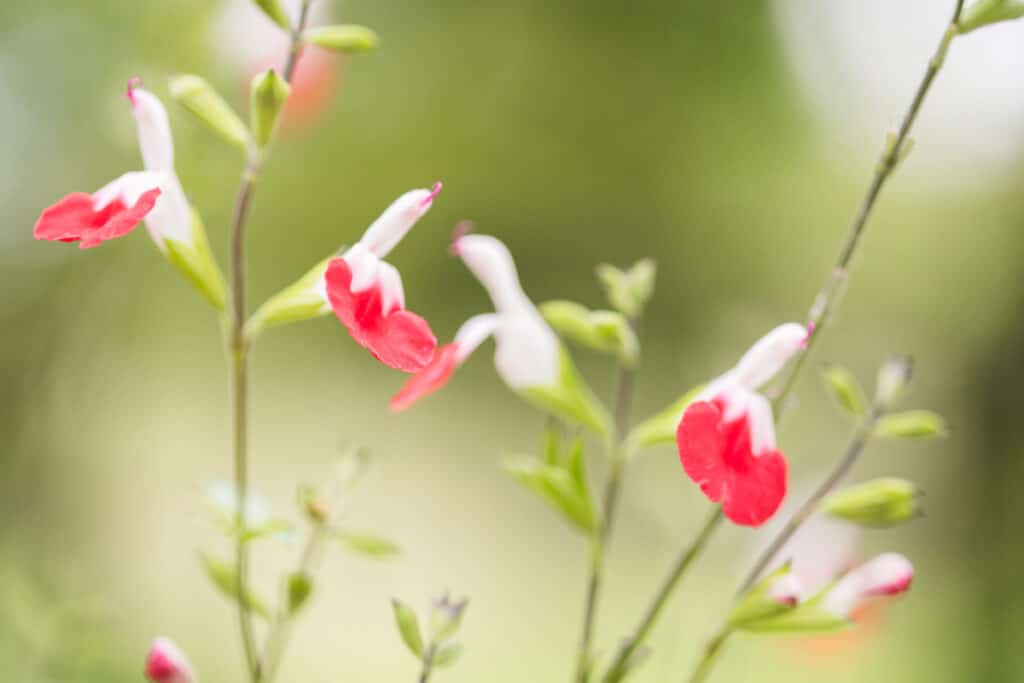
Light Needs
Hot Lips salvia craves bright light and hot heat. This sage does best in a sunny location but can tolerate partial shade in the afternoon. This plant is very heat tolerant once established.
Plant Hot Lips salvia in full sun in borders, garden beds, and even large containers. Make sure are placing the plant in a location that gets full sun all season long for best results (at least 6-8 hours of direct light).
If the sage plant does not get enough sunlight, her stems will become leggy as they stretch for the sun, and she will not produce as many blooms.

Watering
When first establishing Hot Lips salvia you will need to water more regularly, especially during dry spells. Water deeply and allow the soil to dry out in between drinks.
In subsequent years you will not need to water your salvia as regularly as it is heat and drought tolerant. Water during warm and dry weather with a long, deep soak.
Avoid planting in wet or soggy soil, ensuring that the soil around the plant is able to dry out between rain and or watering.
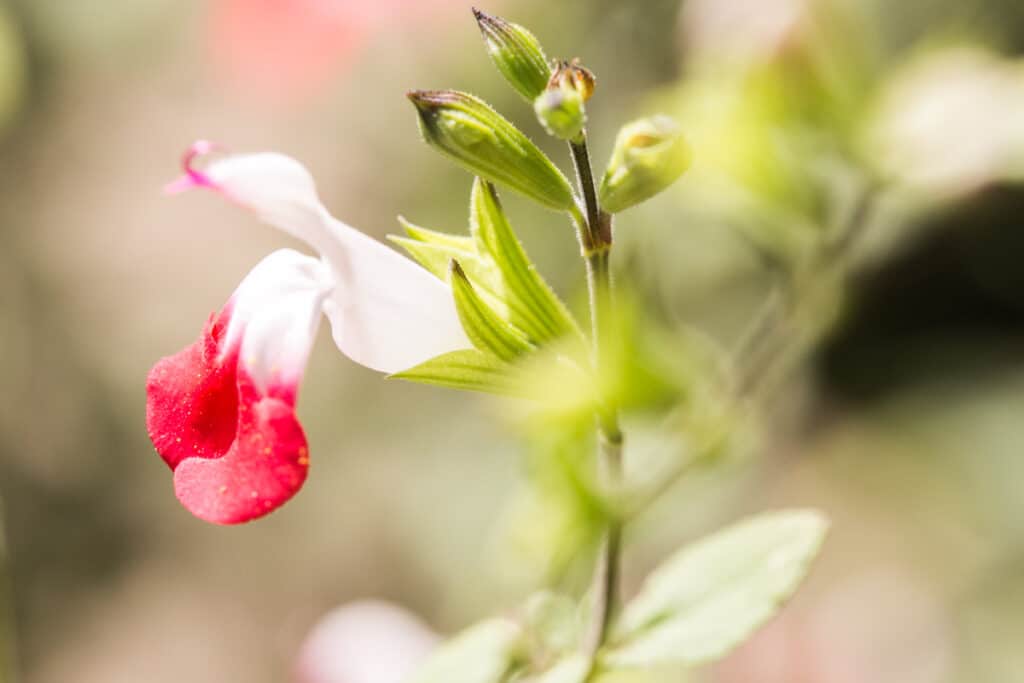
Soil Conditions
Saliva need fast-draining soils with no standing water.
Hot Lips salvia is not a picky plant when it comes to soil… in fact, she does quite well in poor soils with little nutrient makeup. Make sure the soil is well draining and can dry out easily. Avoid swampy, dense or clay soil.
Sandy, well draining soil is the optimal soil condition for this plant. Avoid rich soils that are slow draining, and amend the soil with perlite, sand or vermiculite to help increase drainage.
Bloom Time
Under the right conditions, Hot Lips salvia will bloom all season. This multicolored sage plant will start blooming in early summer and continue until the first frosts of autumn.
Color variations will occur. First you will see pinkish red white blooms, and later in the summer the flowers turn all red.
Read our list of early spring blooming perennials here.
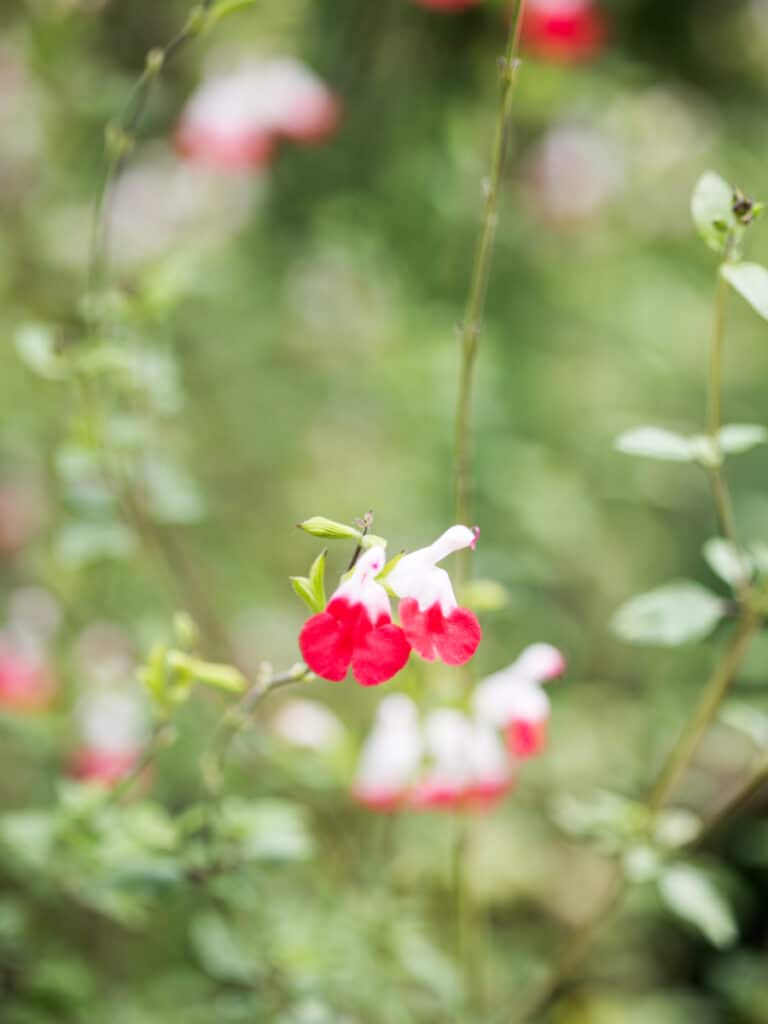
Do You Deadhead Hot Lips Salvia?
You do not need to deadhead Hot Lips salvia in order for it to re bloom. After the initial bloom, a second rush of flowers will bud in several weeks, calling the hummingbirds and bees by name!
No deadheading for more blooms? This is one of the reasons why we consider Hot lLps Salvia one of the easiest evergreen perennials to grow.
Pruning
Prune salvias in late winter to early spring, before new growth emerges on the plant. You can cut old stems back quite severely and the plant will produce new growth and thrive.
You can prune salvia down to the ground, leaving about 2-3 inches of foliage.
Do not prune hot lips salvia in the fall, as the existing foliage helps protect the plant from winter frosts.
Winter Care
If you live in a seasonally cold climate, be sure to mulch heavily around the base of Hot Lips salvia to give it the best chance for survival. Apply a thick mulch of decaying leaves, wood chips, pine needles or bark to help survive the colder months.
Planting in a container and moving indoors to a sheltered, warm area such as a garage or sunroom is also an option.
Planting Companions
There are many beautiful sun loving plants that accent Hot Lips salvia wonderfully. Make sure the plants you choose love full sun.
Plant clumps of catmint, lavender, and other varieties of salvia for a happy pollinator and hummingbird garden. Salvia greggii, or Autumn Sage, is another beautiful sage with red overtones that complements Hot Lips salvia.
To add dimension and height, intersperse foxglove, daisies and cosmos. Read our beginner’s guide to flower gardening to learn more about designing your flower beds.
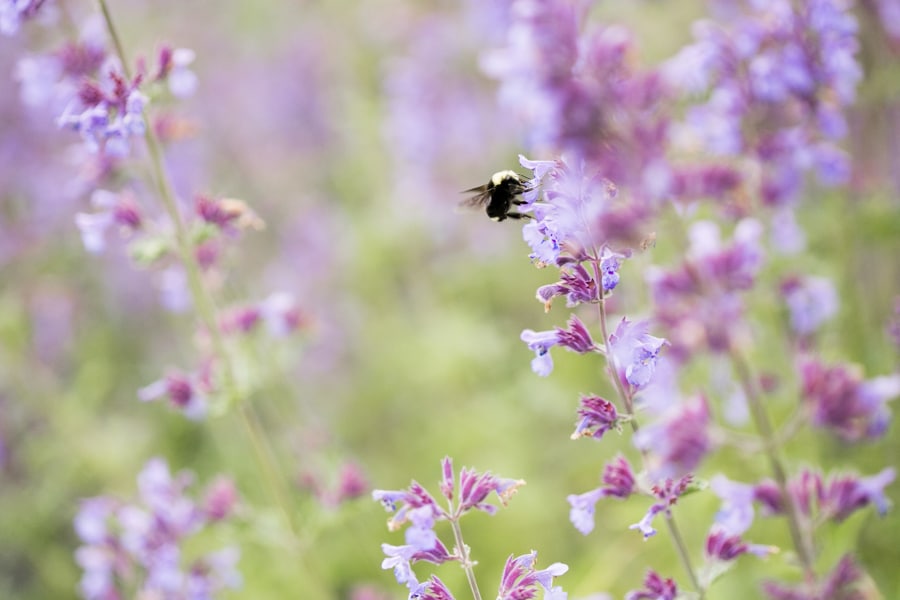
Learn all about growing flowers for a cottage garden here.
Are Salvias Perennial?
Hot Lips salvia can be grown as a perennial is zones 7-10, where the frost is not too heavy. In these zones salvia act as evergreen perennials.
Otherwise, you can grow salvia as an annual. Or you can also plant in pots/containers and move your plant inside to a warm spot that has winter protection, such as a garage or greenhouse.
Mass Plantings
Hot Lips salvia can be used as ornamental borders or as a short privacy screen. These plants grow about 3 feet wide. Plant these salvia plants with at least 36 inches between each shrub.
Growing Hot Lips Salvia In Containers
If you don’t have a spot for Hot Lips in your yard you can easily grow this beautiful sage in a pot or container of your choosing.
Choose a large well draining container to prevent soggy soil and place container salvia in a warm and sunny location. Good drainage is essential to prevent root rot, which can kill the plant.
Make sure to use a quality soil made especially for containers as this will aid in draining. Do not use regular gardening soil as it is too heavy and dense. Look for a soil that is loamy and/or sandy.
Place your potted Hot Lips in a very sunny spot (at least 6-8 hours of full sun). It can thrive with some dappled afternoon shade.
Set your container in an area that is sheltered from strong winds.

Check the soil moisture level of your potted shrub daily. Hot Lips salvia grown in containers will need watered more regularly than that in the ground.
Hot Lips salvia in containers work well on a patio where you’d like to enjoy watching the hummingbirds. Over time the busy birds will get used to your presence, and you’ll feel a hum and rush of their wings as they frequent the patio for a drink.
As your plant grows, you may need to re plant it into a larger container.
FAQ’s
We’ve hit on this a number of times in this article, but in case you missed it, YES hummingbirds absolutely adore Hot Lips. In fact, if you are hoping to attract hummingbirds to your yard we would recommend you find a sunny spot to plant hot lips… or a container to grow her in!
Yes, cut back Hot Lips salvia in late winter to early spring before new foliage begins to grow. Cut the plant back to the ground, leaving about 2-4 inches of foliage. Do not cut any new growth.
Hot Lips salvia grows larger, but it does not spread easily.
Mulch salvia heavily to protect it during the winter. Or, plant in a container and move the container inside. Salvias do not survive in all zones, so be sure to research your growing area prior to planting.
Salvias fail to thrive when they do not get enough sunlight or are over watered. Soggy soil can also cause the roots to decay.
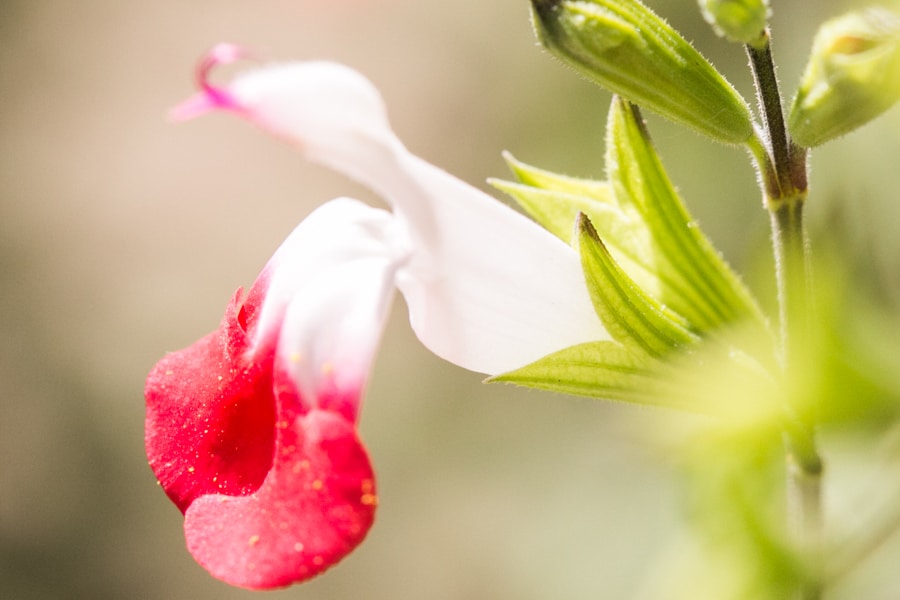
Conclusion
Hot Lips salvia is one of the best garden plants for attracting hummingbirds. With it’s bold colors and pretty narrow leaves, it’s a showstopper that is easy to care for.
Plant this pretty sage in a sunny rock garden or use as a bedding plant, and enjoy the vibrant beauty of this two toned flower all summer long.
Thank you so much for visiting the Green Garden Cottage today! We absolutely adore the outgoing and vibrant Hot Lips and enjoyed sharing our knowledge with you. We’d love to hear your experience with this popular sage, let us know what you think in the comments below!

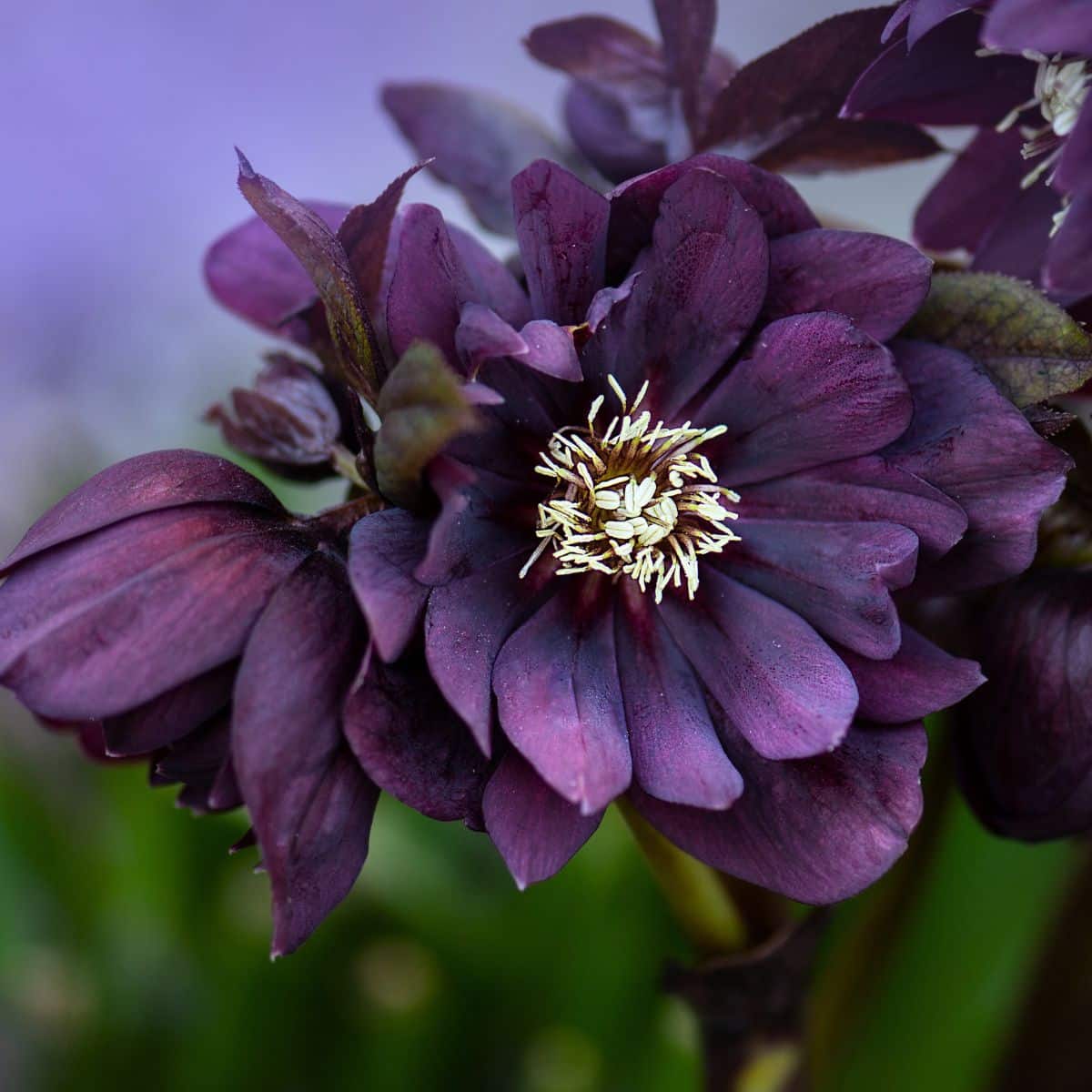
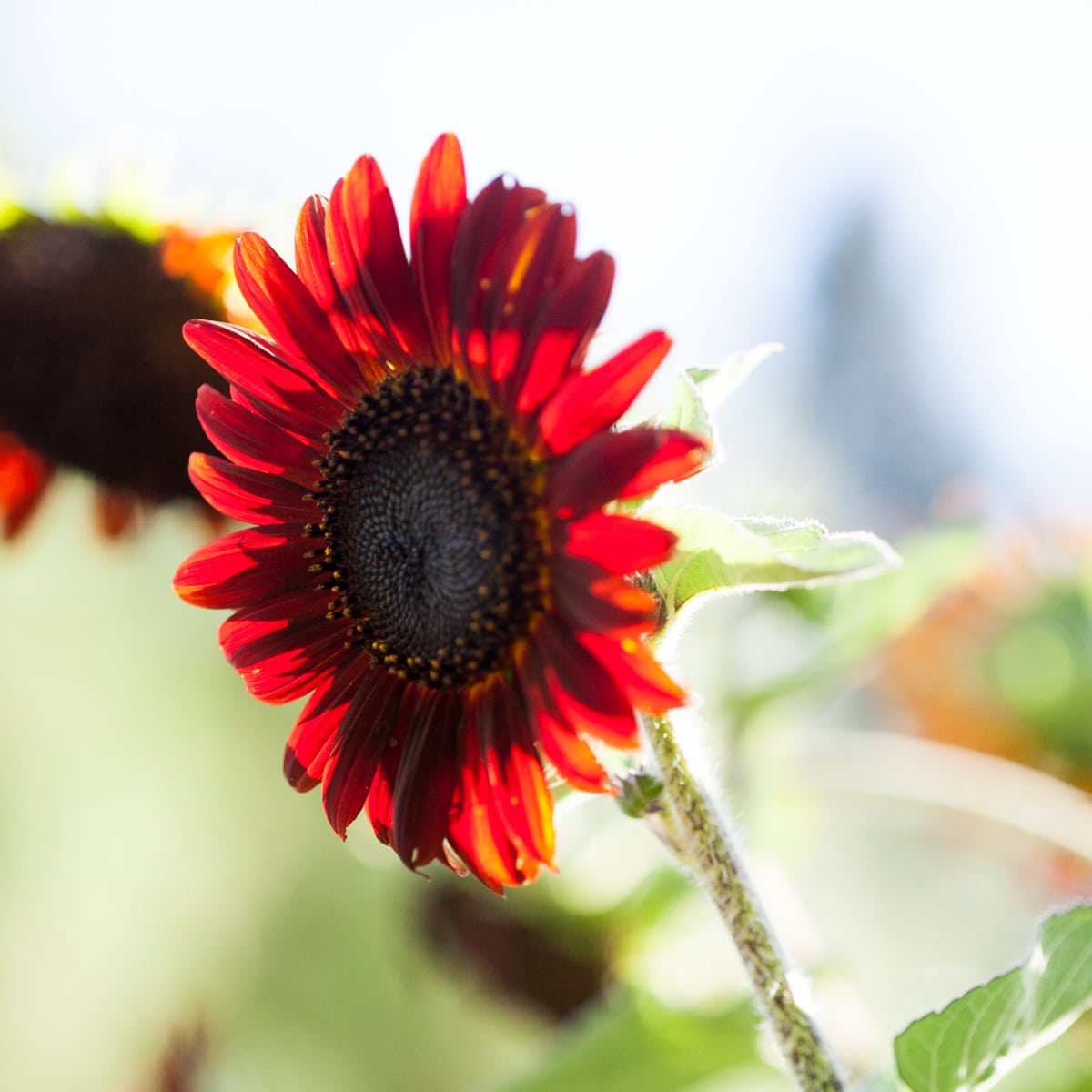
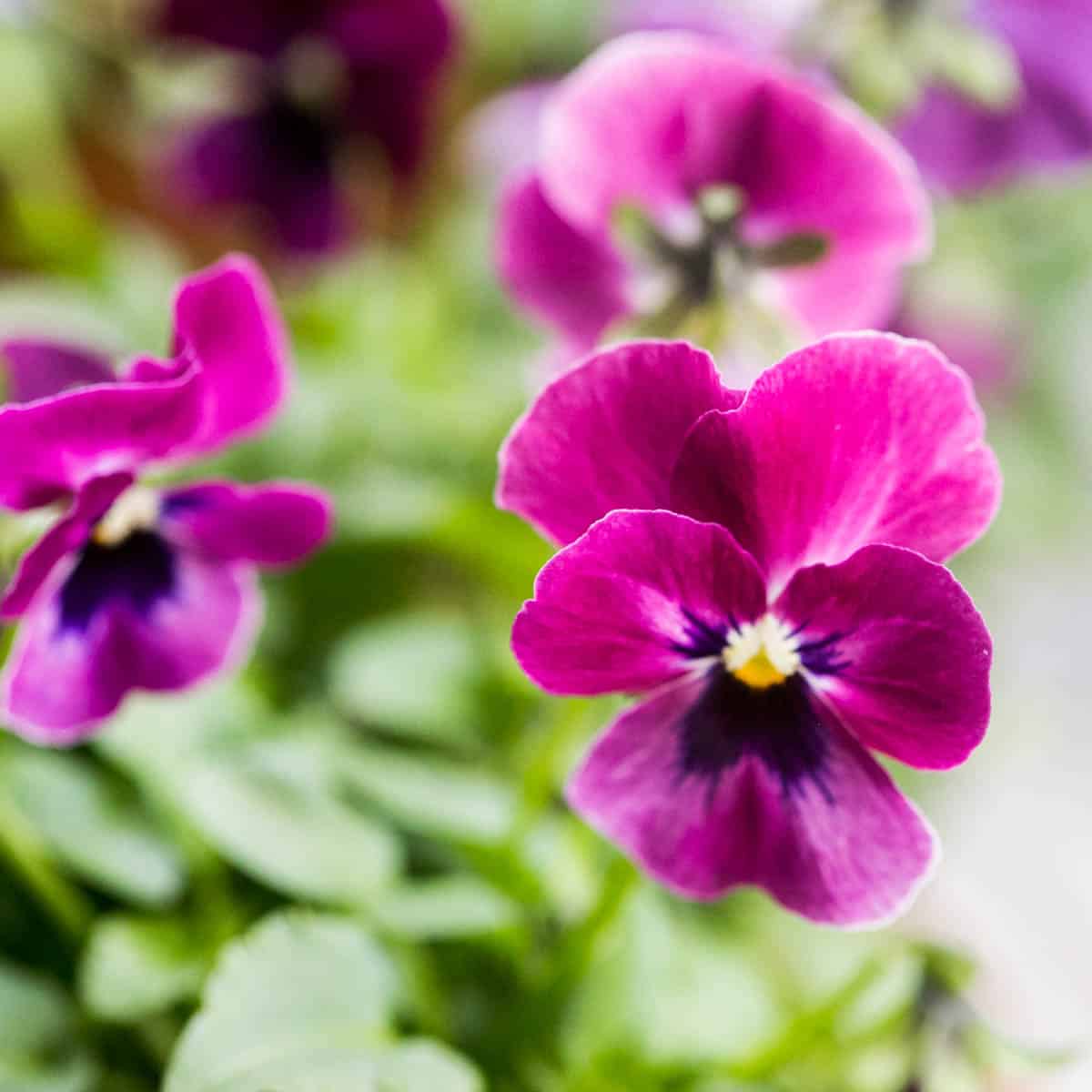
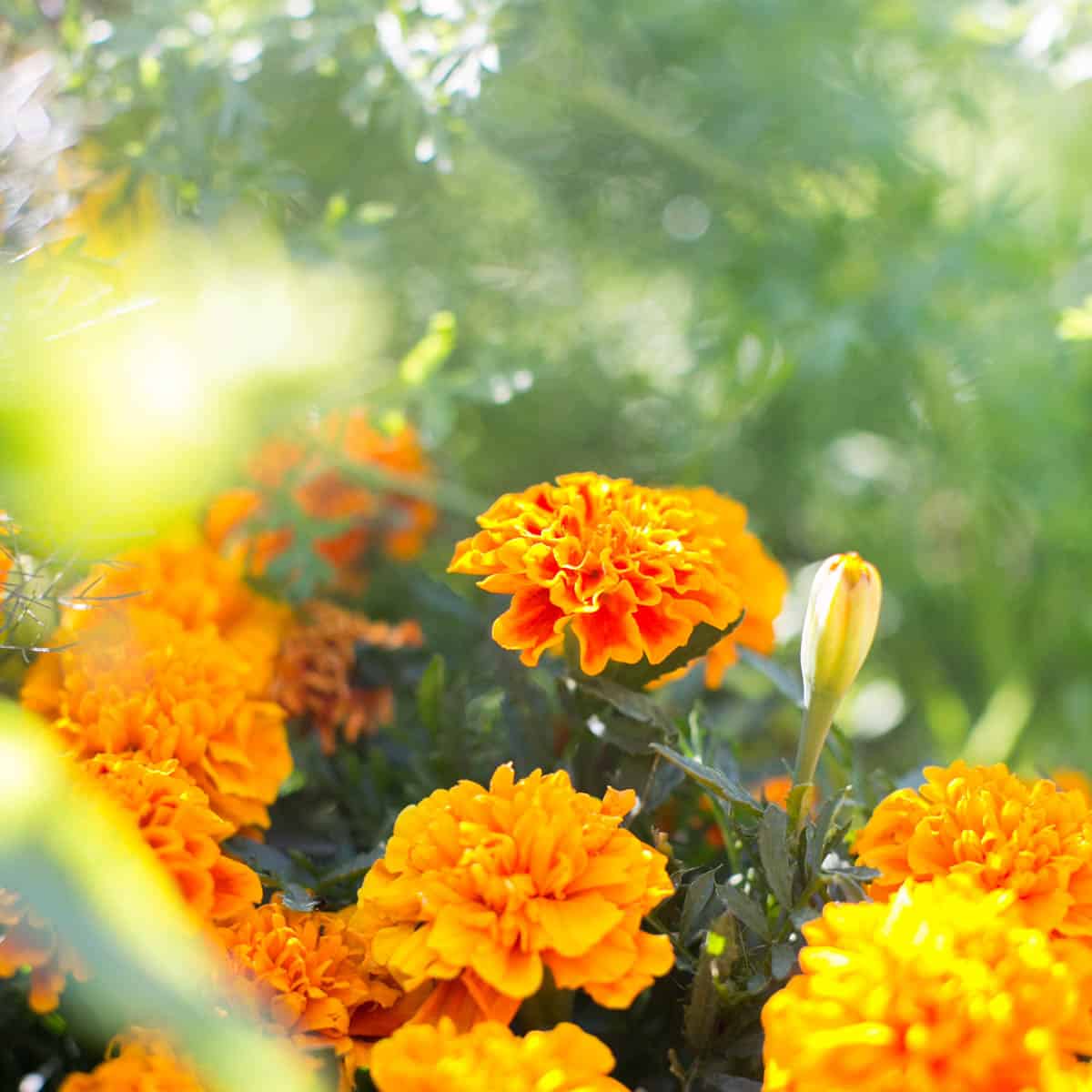

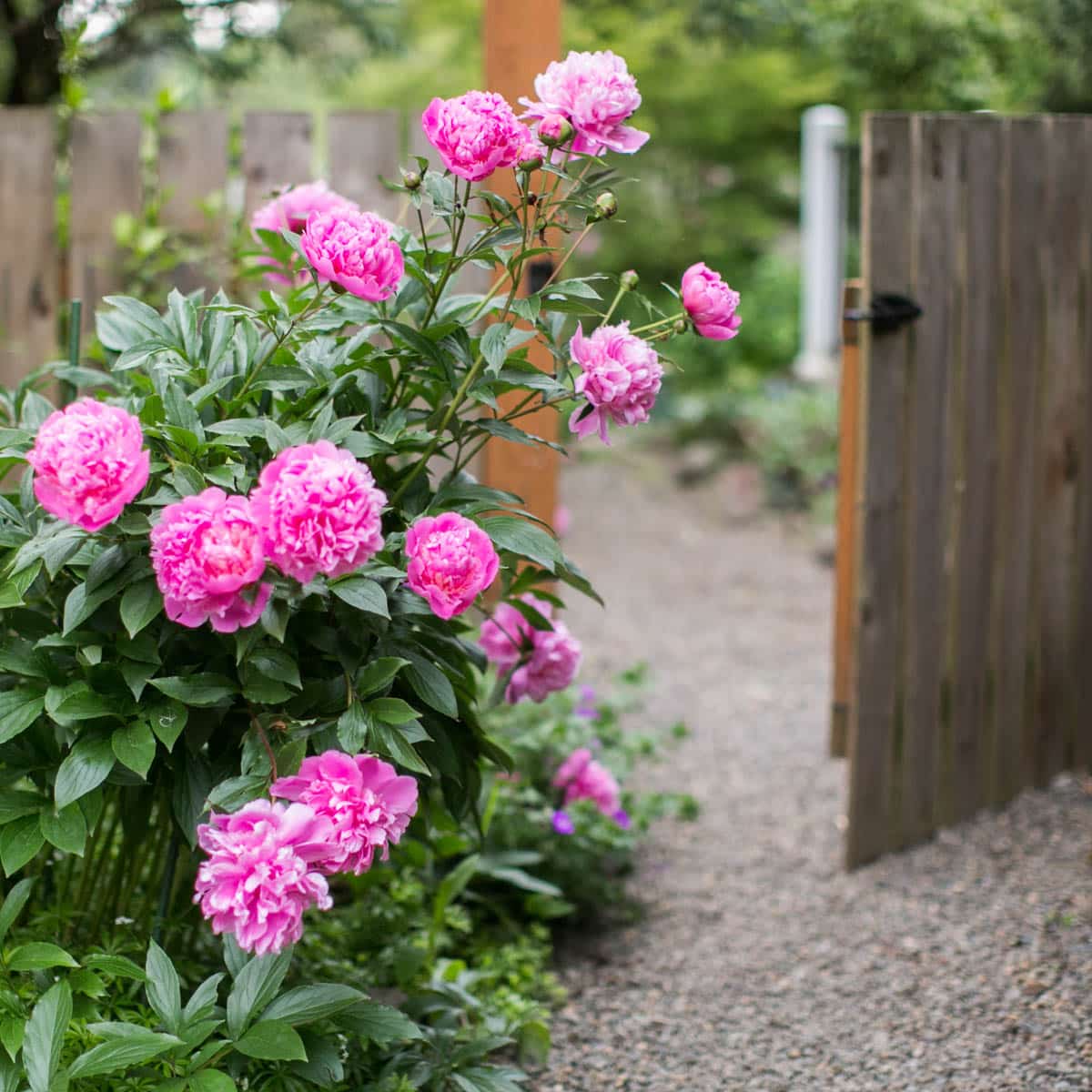
I wanted to thank you for this wonderful read!! I definitely enjoyed every bit of it. I have got you book-marked to check out new things you postÖ
Hummingbird expert John Shewey just did a lecture and told us this was his #2 top plant for hummingbirds.. (#1 is Bee Balm) He is in zone 7 and it grows well for him, My winters are too cold to winter over. How hard is it to grow from seed?
Hi Joan! I would try growing bee balm from seed indoors to give it a headstart and then transplant it outside! You could also plant it in pots and set it in a sheltered area to winter over. 🙂